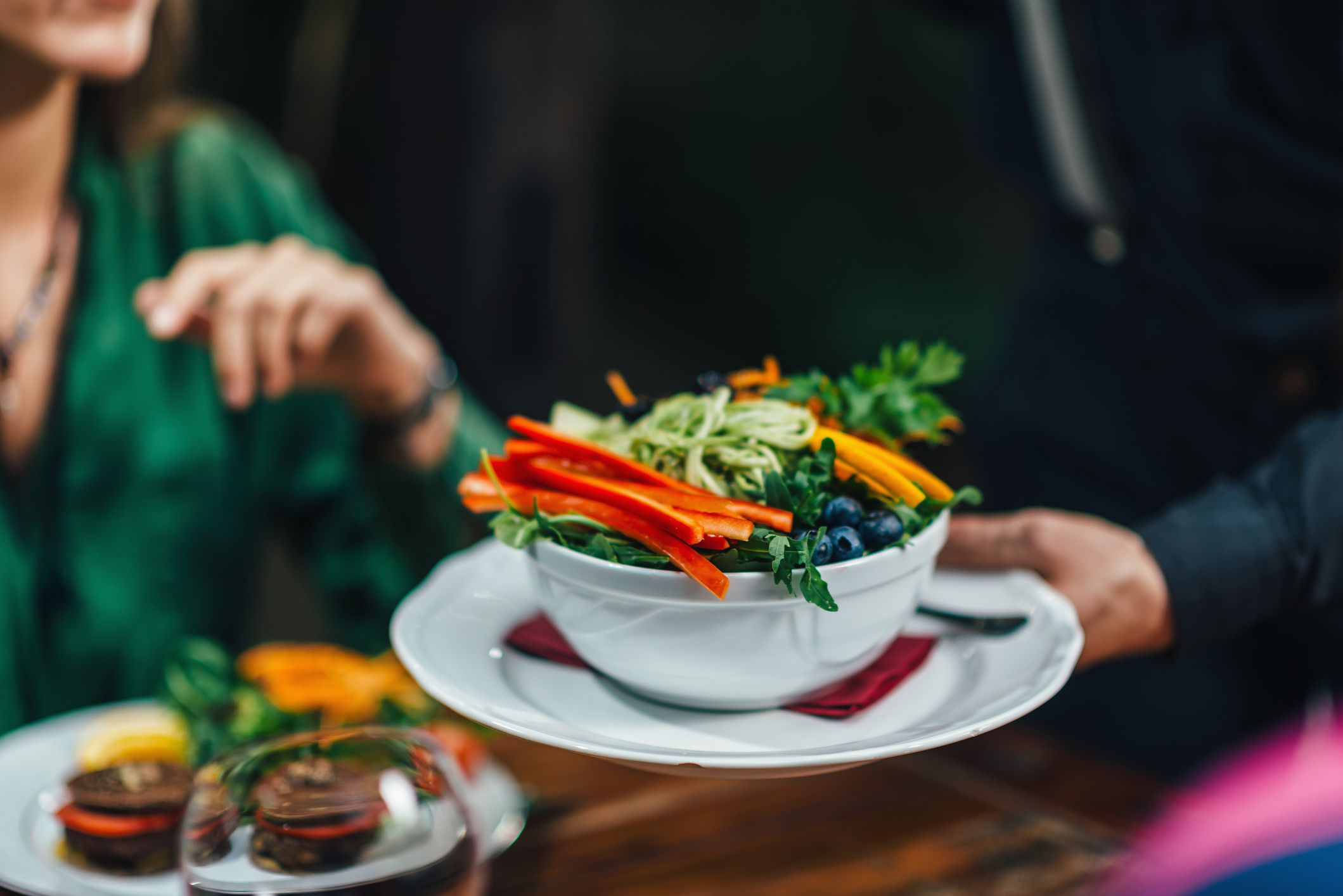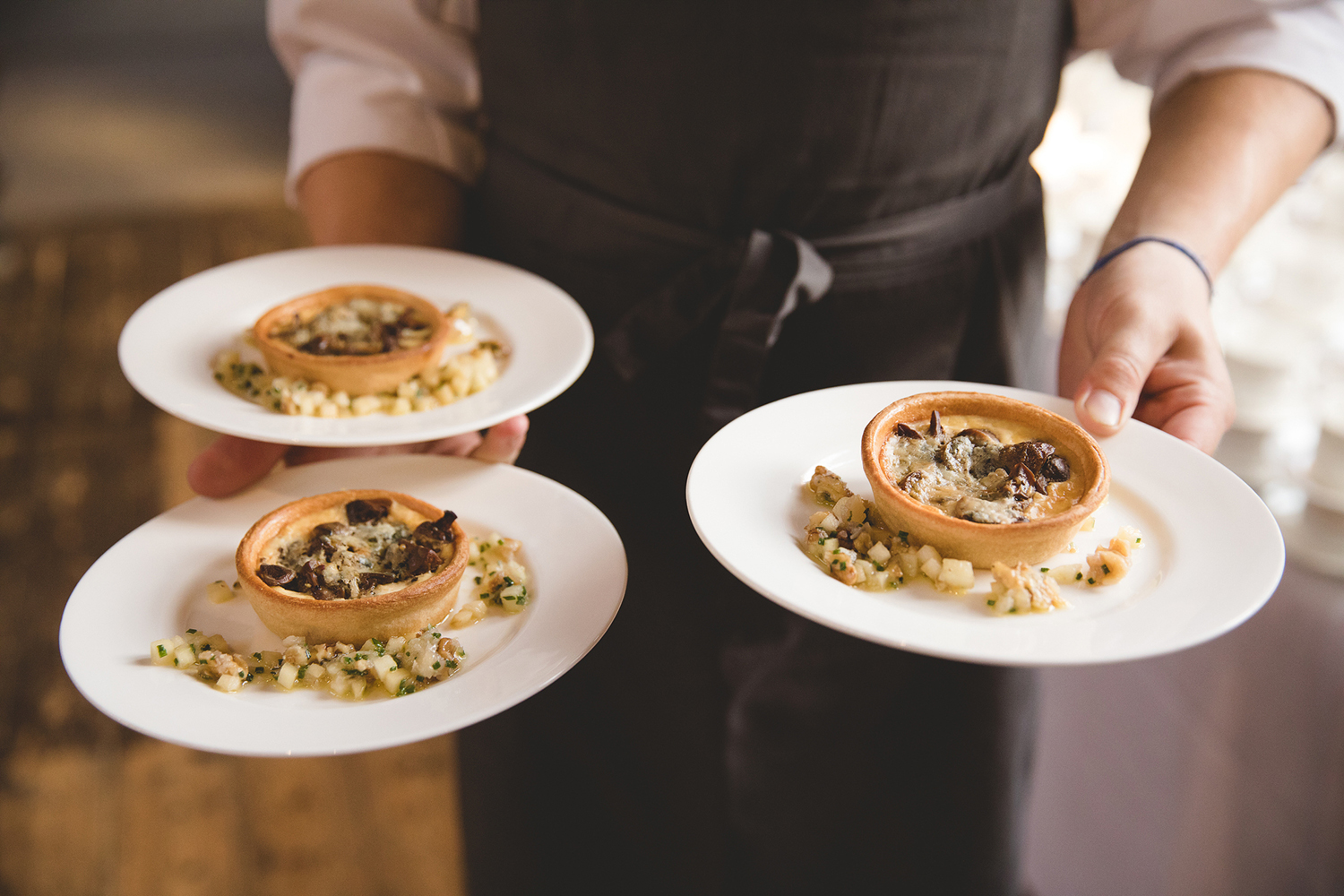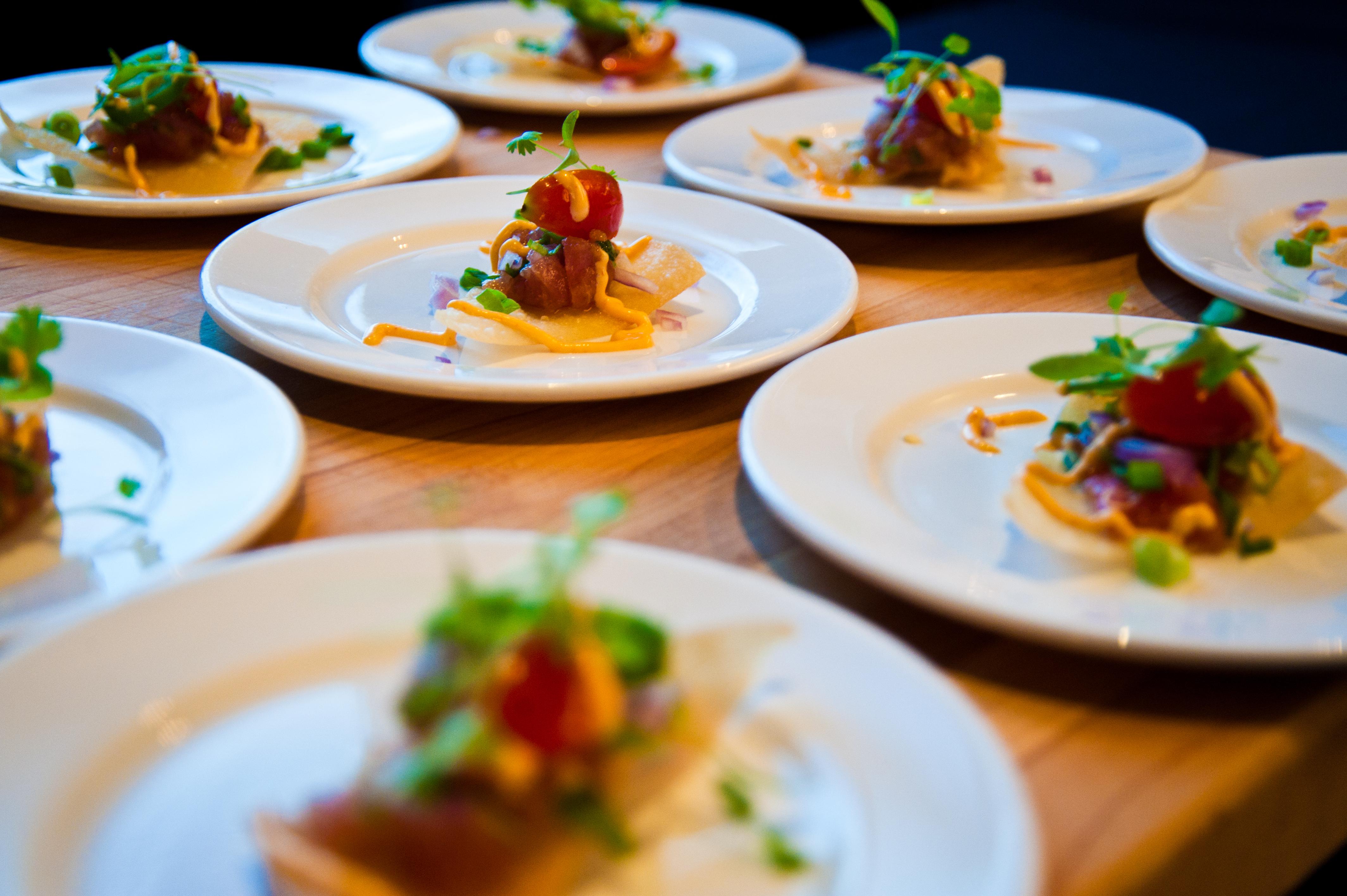In the realm of culinary experiences, serving food transcends mere functionality; it’s an art form that elevates dining into an unforgettable affair. From plated masterpieces to communal feasts, the methods and presentation of food profoundly impact our enjoyment and appreciation.
This comprehensive guide explores the intricacies of serving food, uncovering the techniques, equipment, safety considerations, and cultural influences that shape this essential aspect of dining.
Methods for Serving Food
Serving food is an essential part of any dining experience. The method used for serving can impact the overall atmosphere and enjoyment of the meal.
Plated Service
Plated service is a traditional method where food is prepared and arranged on individual plates in the kitchen before being brought to the table. This method offers a more formal and elegant dining experience, as each dish is presented in a visually appealing way.
However, it can be more time-consuming and requires a higher level of skill in the kitchen.
Buffet-Style Service
Buffet-style service involves setting up a buffet table where guests can serve themselves from a variety of dishes. This method is often used for large gatherings or events where a quick and easy dining experience is desired. Buffet-style service allows guests to choose the dishes they want and in the quantity they prefer, but it can lead to a more casual and less personalized dining experience.
Family-Style Service
Family-style service is a casual method where large dishes of food are placed on the table and shared among guests. This method fosters a sense of community and encourages conversation, as guests can easily pass dishes and help themselves to different portions.
However, it can be challenging to ensure that everyone gets an equal share of the food, and it can be less practical for large groups.
Equipment Used for Serving Food
Serving food requires various types of equipment to ensure proper presentation, functionality, and hygiene. These tools facilitate the efficient delivery of meals and enhance the dining experience.
Trays
- Flat, rectangular surfaces used to transport multiple dishes, glasses, or utensils.
- Materials include stainless steel, plastic, or melamine, offering durability and ease of cleaning.
Platters
- Large, flat or slightly concave dishes designed to serve main courses, appetizers, or desserts.
- Available in various shapes and sizes, typically made from porcelain, ceramic, or stainless steel.
Serving Utensils
- Tools used to transfer food from serving dishes to individual plates.
- Include spoons, forks, tongs, spatulas, and serving bowls.
- Materials vary depending on the type of food being served, such as stainless steel, plastic, or heat-resistant materials.
Presentation of Served Food

The presentation of served food is an integral part of the dining experience, as it influences the guest’s perception and enjoyment of the meal. An appetizing and visually appealing presentation can enhance the overall dining experience, making the food more enjoyable and memorable.
To create visually appealing food presentations, there are several tips and techniques that can be employed:
Plating
The choice of plate or serving dish can significantly impact the presentation of the food. Consider the shape, size, and color of the plate to complement the dish and create a visually balanced composition.
Arrangement, Serving food
The arrangement of the food on the plate is crucial for creating an eye-catching presentation. Experiment with different arrangements, such as layering, stacking, or creating height to add depth and interest to the dish.
Garnishes
Garnishes can add color, texture, and flavor to the dish. Use fresh herbs, edible flowers, or other edible garnishes to enhance the visual appeal and complement the flavors of the dish.
Lighting
Proper lighting can make a significant difference in the presentation of food. Natural light is ideal, but if artificial lighting is necessary, use warm, flattering light to showcase the dish’s colors and textures.
Consistency
Maintaining consistency in food presentation is essential for a professional and polished dining experience. Ensure that all dishes are presented in a similar manner, with attention to detail and a cohesive overall aesthetic.
Food Safety Considerations
Ensuring food safety is paramount in serving food. Proper handling, storage, and serving procedures are essential to prevent contamination and safeguard consumer health.
To maintain food safety, several key considerations must be observed:
Personal Hygiene
- Maintain clean hands by washing thoroughly with soap and water.
- Wear clean clothing and cover any open wounds.
- Avoid touching food with bare hands.
Food Handling
- Use separate utensils for raw and cooked foods to prevent cross-contamination.
- Cook food to proper temperatures to kill harmful bacteria.
- Store food at appropriate temperatures to prevent spoilage.
Storage
- Store food in clean and sanitized containers.
- Keep perishable foods refrigerated or frozen.
- Discard expired or spoiled food.
Serving
- Use clean utensils to serve food.
- Avoid holding food for extended periods.
- Keep hot food hot and cold food cold.
Serving Food in Different Settings

Serving food effectively requires an understanding of the unique requirements and challenges associated with various settings. These settings range from formal restaurants to casual cafes and private events, each presenting distinct considerations for food service.
Restaurants
Restaurants demand a high level of service and attention to detail. Food presentation, timing, and table management are crucial to ensure a positive dining experience. Servers must be knowledgeable about the menu, handle orders accurately, and maintain a professional demeanor.
Cafes
Cafes offer a more relaxed atmosphere, often focusing on quick and casual dining. The menu is typically limited, and orders are placed at a counter or kiosk. Speed and efficiency are essential, as customers may have limited time.
Private Events
Private events, such as weddings and corporate functions, require a tailored approach to food service. The menu and presentation should align with the theme and preferences of the hosts. Catering staff must be able to handle large groups, manage dietary restrictions, and provide exceptional service.
Technology in Food Serving
Technology has revolutionized various aspects of the food industry, including food serving. Online ordering systems and automated food preparation are just a few examples of how technology is transforming the way food is served.
Online ordering systems allow customers to place orders from the comfort of their own homes or on the go. This convenience has led to increased sales for restaurants and reduced wait times for customers. Automated food preparation uses machines to prepare food items, freeing up staff to focus on other tasks and improving efficiency.
Benefits of Using Technology in Food Serving
- Increased convenience for customers
- Reduced wait times
- Improved efficiency
- Increased sales for restaurants
- Reduced labor costs
Limitations of Using Technology in Food Serving
- Potential for errors in online ordering systems
- Dependence on technology can lead to disruptions in service
- Automated food preparation may not be suitable for all types of food items
- Initial investment in technology can be high
- Training staff on new technology can be time-consuming
Cultural Influences on Food Serving

Cultural factors profoundly influence the way food is served, reflecting diverse traditions, beliefs, and social norms. From the arrangement of dishes to the use of specific utensils, cultural practices shape the dining experience.
For instance, in many Asian cultures, meals are served communally, with a variety of dishes placed on a shared table. This fosters a sense of togetherness and encourages sharing. In contrast, in Western cultures, individual plates are typically used, promoting a more individualized dining experience.
Influence of Religion
Religious beliefs also play a significant role in food serving practices. For example, in Judaism, kosher dietary laws dictate the separation of meat and dairy products. As a result, Jewish households often have separate sets of dishes and utensils for these food categories.
Influence of Social Status
Social status can also influence food serving customs. In some cultures, elaborate table settings and formal serving rituals are reserved for special occasions or guests of honor. In other cultures, food may be served more casually, with less emphasis on presentation.
Influence of Regional Traditions
Regional traditions also shape food serving practices. For instance, in Southern Italy, pasta is often served al dente, or slightly undercooked, while in Northern Italy, it is typically cooked to a softer consistency.
Essential Questionnaire: Serving Food
What are the advantages of buffet-style serving?
Buffet-style serving offers convenience, flexibility, and allows guests to customize their plates according to their preferences.
How can I ensure food safety when serving large groups?
Maintain proper food temperatures, practice good hygiene, and follow HACCP guidelines to prevent contamination and ensure the safety of your guests.
What cultural factors influence food serving practices?
Cultural norms, religious beliefs, and regional traditions all play a role in shaping the way food is served and consumed in different societies.
